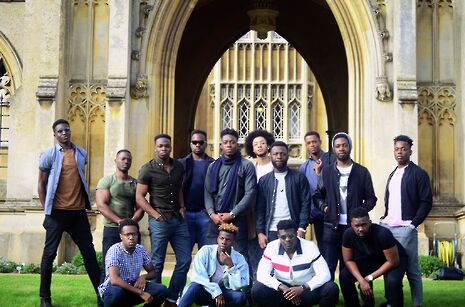Cambridge’s toxic combination of racism and sexism
The University still has a long way to go before every group is treated with decency and respect, argues Lauren Carneiro

As a non-BME person, I can make no attempt to speak for Cambridge’s black community: I can only speak as an outsider looking in. In doing so, I recognise that I speak from a place of privilege. Nonetheless, two and a half terms into my first year at Cambridge, it has become abundantly clear to me that the university suffers from a serious race problem.
There is always a sense among white liberals that overt forms of racism won’t happen in a place like Cambridge. The blackface party depicted in the newly-released Netflix series Dear White People seems a world away from the Cambridge bubble. However, hearing about a rugby player at Anglia Ruskin donning blackface in an attempt to ‘dress up’ as Serena Williams for a party suggests that these problems are much closer to home than initially thought.
The image of the white man in a suit is inseparable from Cambridge
Since the 19th century blackface has been a source of entertainment in Britain, but until now, even I was naïve enough to believe that we had somewhat developed from this point and that nobody in Cambridge could be as insensitive and thoughtless to paint their face black to mimic a person of colour. These blackface shows dehumanised black communities, portraying them as lazy, passive and dopey. The student’s decision is particularly distressing considering the barrage of racist abuse Williams has suffered in the last few weeks since announcing her pregnancy with fiancé Alexis Ohanian. She has also repeatedly faced insults about her perceived masculinity, adding a sexist dimension to the student’s ‘costume’.
This is not the only event which has raised flags in my mind about how Cambridge conducts itself with the issue of race. Princess Nokia’s (whose real name is Destiny Frasqueri) performance at the Charity Fashion Show earlier in the year was interrupted when she hit an audience member and walked off stage after being harassed by a white man. Nonetheless, it was not the actions of the man which disturbed me to the greatest extent, but rather the reaction of the media which straight away attacked Frasqueri. The image of the ‘angry black women’ was wielded almost immediately: in The Cambridge Student, it was described how she “launched an attack on an audience member” and then “stormed off stage”.
Indeed, the image of the white man in a suit is inseparable from Cambridge, from the CUCA member burning money in front of a homeless person to the harassment which Frasqueri had to endure. The attitudes of these kind of men are commonplace in Cambridge. On a swap I attended on Caesarean Sunday, one of the fines made by one of these suit-wearing boys was about being forced to wear a condom whilst having sex with a girl on the pill. Either these boys seriously lacked basic sex education, or they had thought that these misogynist comments were acceptable to make. Meanwhile, my friends and I watched in horror as they all roared with laughter.
I can only imagine having to add a racial dimension to the sexism which Princess Nokia was subjected to. This was a case where a white man’s sense of entitlement allowed him to make comments to a black female performer, and as soon as she fought back, she was immediately vilified and dehumanised. Never mind that Frasqueri had a “sad and tired disposition backstage”, as FLY, the forum for Cambridge’s women of colour, reported, what mattered for the majority of Cambridge was that a white man had been attacked.
While I cannot pretend to speak for Cambridge’s black community, I hope to emphasise how issues of race across the university should be a concern of us all, particularly when combined with the rampant sexism that is so common. While the ACS photo of the black men of Cambridge was rightly widely admired, it should serve only to highlight how much further we have to go
 News / Caius mourns its tree-mendous loss23 December 2025
News / Caius mourns its tree-mendous loss23 December 2025 News / Clare Hall spent over £500k opposing busway 24 December 2025
News / Clare Hall spent over £500k opposing busway 24 December 2025 Comment / The ‘class’ of Cambridge24 December 2025
Comment / The ‘class’ of Cambridge24 December 2025 Comment / Yes, I’m brown – but I have more important things to say22 December 2025
Comment / Yes, I’m brown – but I have more important things to say22 December 2025 Interviews / Politics, your own way: Tilly Middlehurst on speaking out21 December 2025
Interviews / Politics, your own way: Tilly Middlehurst on speaking out21 December 2025







